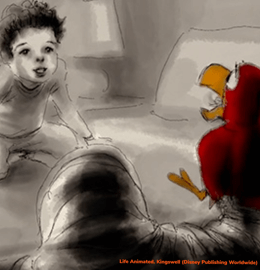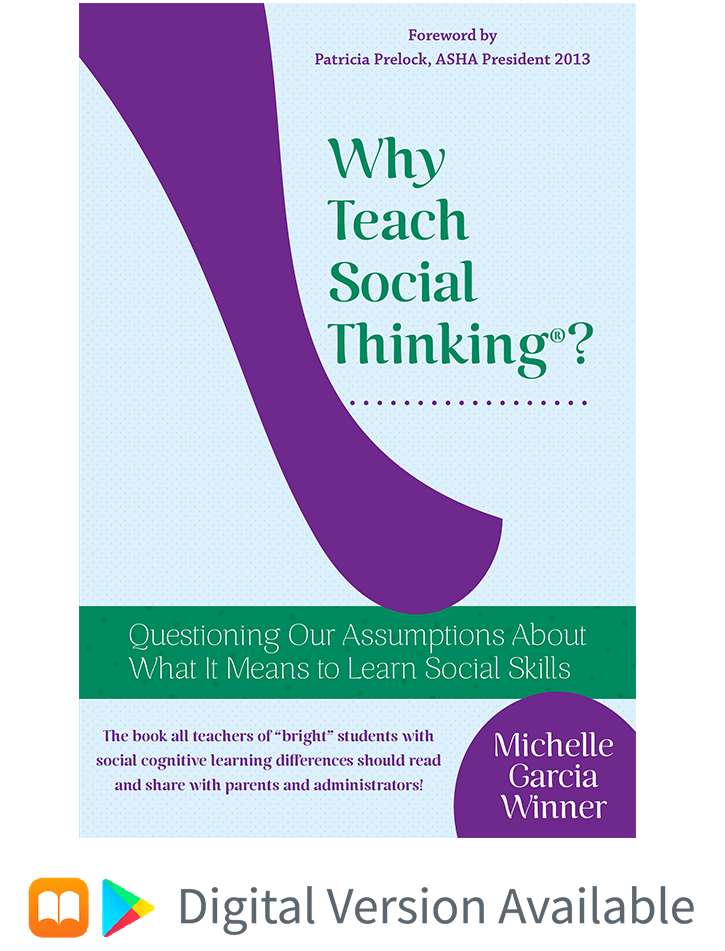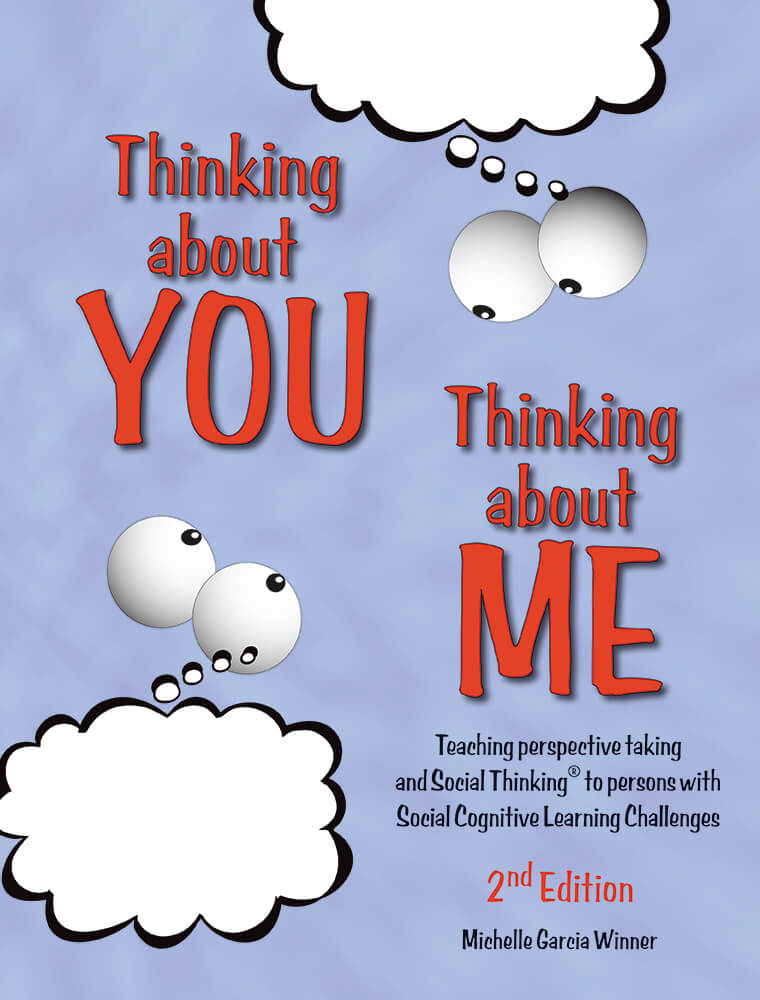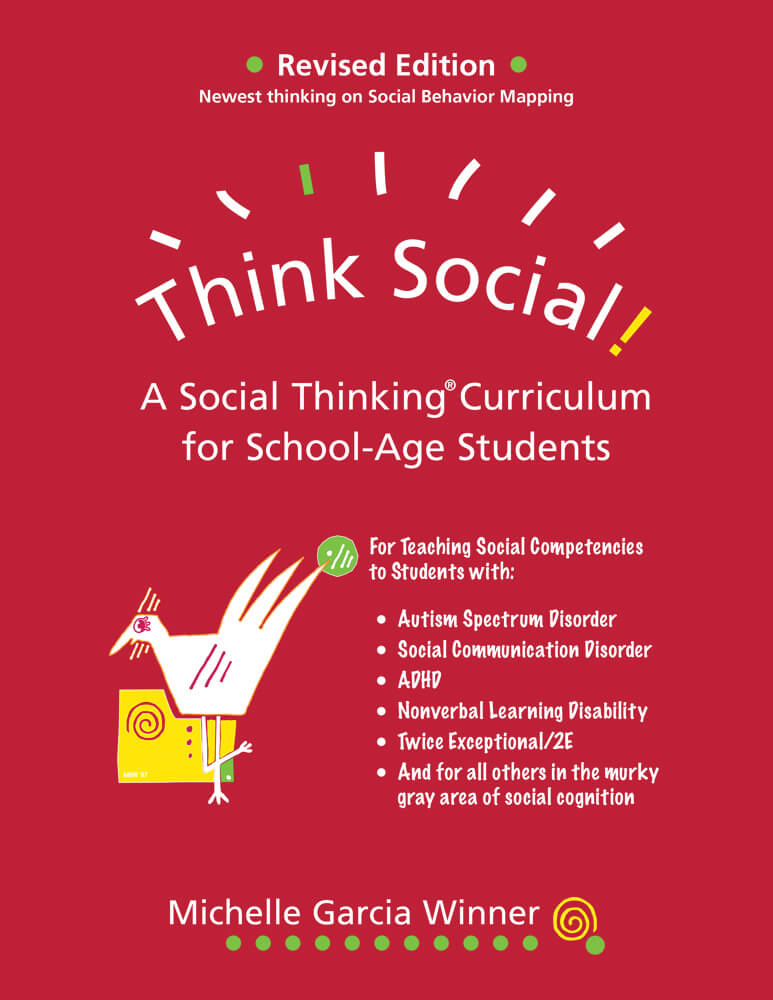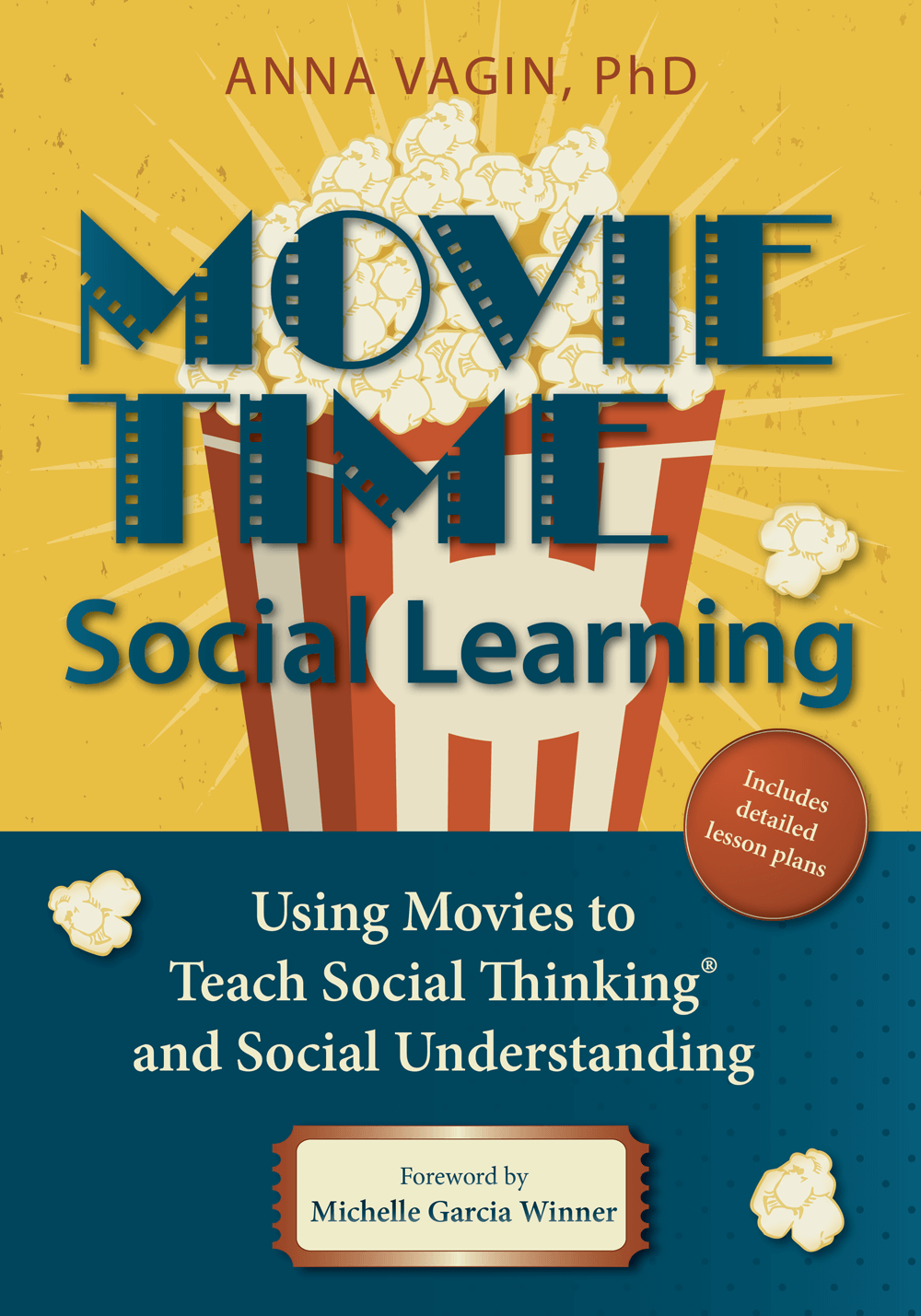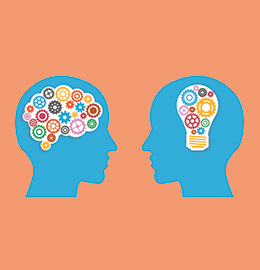Updated: April, 2022
© 2022 Think Social Publishing, Inc.
A couple of years ago I received a phone call from Ron Suskind, a Pulitzer Prize–winning journalist and best-selling author. Intrigued and curious about why he was reaching out to me, I listened while Ron explained that he and his wife, Cornelia, had just begun learning about the Social Thinking® Methodology and whether or not some components might be helpful for their 23-year-old son, Owen.
Ron passionately described how Owen was born with strong early relationship skills which almost vanished overnight as a toddler. By preschool and early elementary school years, Owen had limited language, social communication, and many academic learning skills. Ron and Cornelia, experiencing their own sense of loss, were searching for ways to connect to Owen. After their many traditional attempts to “reach him” fell short, they ended up following his lead and jumped into the rabbit hole of Owen’s affinity: watching Disney movies over and over and over again, with him. This opened a door to relate to Owen at a level that made sense to him. It also gave Ron and Cornelia the opportunity to explore the world from Owen’s perspective. What they discovered was their "seemingly clueless" little guy was actively learning about the social world through the predictable relationships being mapped out in Disney stories. These were narratives that provided similar story lines in different contexts and a predictable set of human and animal relationships, all while exploring a range of emotional concepts. Disney movies guide their viewers in exploring the complications of love, hate, happiness, loss, triumph, anger, jealousy, and betrayal in a clear and obvious manner. Characters and situations that are good are very obviously good, and the evil is clearly evil. The Suskinds followed Owen’s fascination for Disney as he grew up, and through it they were able to explore, relate, and expand their discussions with him. And to their surprise, they learned that Owen was making some deep discoveries about how people relate, think, and feel that were not evident in his day-to-day, moment-to-moment social relationships.
Ron decided to write a book to describe what they learned about Owen and his emerging understanding of the social world, as well as the connection they were able to create by abandoning their preconceived notions of how Owen should relate to them and instead exploring how they could relate to Owen. Ron’s book Life, Animated: A Story of Sidekicks, Heroes, and Autism was published in spring of 2014 by Kingswell (an imprint of Disney Publishing Worldwide) to critical acclaim.
After this initial connection, I agreed to spend time with Ron and Cornelia to continue our discussions. So in 2012, after they attended a two-day Social Thinking conference in Florida, my colleague Pam Crooke and I met them at Walt Disney World. We spent the day riding Owen’s favorite rides to discuss what it is about Disney movies that have such strong universal appeal to so many of Autistic children and adults. Ron and Cornelia knew that while Owen’s affinity for Disney gave them a window into celebrating their son’s many strengths—which included dramatic theatrical reenactments, discussions about the deep connections to the characters’ inner conflicts and achievements, and his ability to artistically render the characters with remarkable ease—they were not blinded by this strength. They also recognized that Owen’s ability to relate to others and socially reason and problem solve in real-time interactions was a relative challenge.
I agreed to work with Owen and his parents (July 2014) for two weeks of intensive clinical sessions. I subsequently learned that a group owned by Disney was making a documentary of Owen and his family’s experience and my treatment with him was to be filmed (see photo). This filming eventually was included in part of the Sundance Audience Award film about Owen’s life called Life Animated.
If you are familiar with the Social Thinking Methodology, you know that we always start by looking at the individual first and how they use their social mind to attend to and interpret social information. We avoid assumptions based on test scores and instead start by trying to understand how they view the world. From there we teach lessons at a level the individual can understand about their own and others’ perspectives, mental manipulation, and social self-awareness, focusing on social attention and related social skills. We also connect social learning to social academic abilities and critical thinking, skills that are highly valued in the classroom, community, and work environments.
Like many of our clients and students, Owen was far more able to describe different perspectives, beliefs, emotions, and related responses when thinking about his beloved Disney narratives than he was in real time face-to-face interactions with people. Not only could he relate to his characters’ perspectives, but he was somewhat poetic about them. Owen has a deep and even contemplative understanding of Disney’s characters, and he is able to use this information when trying to make sense of his own personal challenges. For instance, when feeling stressed Owen relates to this emotion by considering how one of his characters experienced a similar feeling. He finds encouragement and motivation in studying how his characters worked through the problems they experienced.
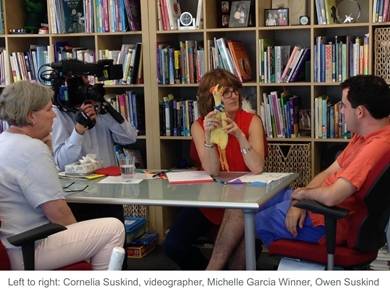
Yet in the fast-paced moment of direct social interaction this deep knowledge all but vanishes; he appears socially disconnected from the people around him. Owen is a genuinely nice person and he honestly wants to make others feel good. But he struggles to focus his social attention on the people around him in face-to-face, moment-to-moment communicative exchanges. Because of this, others interpret him as aloof, desiring time alone, lost in thought, and often solely interested in the internal workings of his own mind.
When presented with such a discord between our understanding of an individual’s social mind and the manner in which that same individual presents themself in social situations, we must stop and ask a different set of questions. Owen was not the first individual I had encountered who challenged the “inside/outside” assumptions most of us hold about being social: what’s on the inside is reflected on the outside and vice versa. Individuals like Owen have prompted me to consider all sorts of questions over the years and entertain different constructs about how we each interpret what “being social” means.
- Researchers continue to try to create advanced theory of mind tests to better understand how we can measure some of the social difficulties our teens and adults have when relating to others. They often do this by using videos of everyday people (not movie characters) and asking our adults to explain the intentions and emotions of the people in the film. The results have been mixed. Our adults tend to be more competent when judging the intentions of people in communicative interactions on film and less so when having to judge intentions in the real-life communication moment with another person.
- Why can some of my clients with more subtle social issues do a good job explaining how characters think and feel in a novel they read yet are not able to use their social knowledge with any ease when trying to maintain a friendship?
- Why can some of my students write a thoughtful narrative essay but constantly interrupt their teacher when in a classroom?
- As I look at my own social abilities, why am I far better at counseling my friends through their relationship difficulties than noticing my own difficulties in my personal social relationships?
Through Ron’s book about Owen and the time I spent with him, I gained a better understanding of the multiple worlds of our clients’ and perhaps even our own perspective taking/theory of mind abilities.
Theory of Mind and Social Executive Functioning
What’s the bigger picture of this discussion? It’s this. Each of the bulleted examples above shows people’s ability to think more astutely about social information when they are observing it from afar rather than living through it. From my clinical work I have observed there appears to be a great divide between what my clients can understand about the world and what they can do in the moment of social interaction.
Maybe you’ve noticed this yourself, as a parent, teacher, or therapist of someone with social learning differences and/or challenges. Maybe you’ve even remarked, as I have: “My child/client/ student can explain how other people are thinking in different situations, but they seem to be aloof in their own interactions!” It leaves us perplexed! That said, even our simple remark implies we all have the belief that if a person can describe something, they should be able to do it. Hmmm, maybe that’s another assumption we should put to rest?
Social competence is more than theory of mind and perspective-taking abilities. It requires socially based executive functioning. Our socially based executive functioning is what we use when we’re expected to transport our basic social understanding (theory of mind) into our own social relationships. Our more-distant, voyeuristic social mind provides us with precious time to process what others are intending, thinking, and feeling, such as when we watch a Disney movie, especially one we watch over and over again. But when in the real-time moment of our own social interactions, we don’t always have the luxury of time. Our social interpretations in the moment need to merge with our own personal desires, thoughts, and emotions in millisecond timing for us to react and respond with perceived social competence. This requires theory of mind to piggyback onto executive functioning skills.
Social executive functioning provides the tools we need to engage in a cascade of thinking and related actions, allowing us to interpret, plan, and self-regulate through the moments of our social relationships. This is how we appear friendly through a boring social conversation, or shift gears if someone we are getting to know makes us feel uncomfortable and we decide to create a social exit plan on the spot.
For many of our clients, there is a relative weakness (compared to other strengths) in the development of both their theory of mind as well as their executive functioning (not to mention their over-focus on details).
Some may have trouble firing these many interpretive, planning, and self-regulatory pistons all at the time. So, while they may have the solid ability to interpret in “movie time” or voyeuristically, where no clear social response needs to be elicited from them (other than their own contemplation of the events), they consistently struggle in real time when speed is at the essence of social communication.
Owen is a good example of one who has remarkable interpretative abilities for movie characters but needs to work on applying theory of mind abilities with others. We can value his movie time or voyeuristic theory of mind abilities and use this to expand his thinking through collaborative discussions about characters, their emotions, and the situation. This helps to motivate real-time theory of mind experiences in face-to-face interactions. The good news is that Owen has a built-in opportunity to practice this with his peers as they participate together in their own Disney club.
My time with Owen and his family came full circle for me one weekend in October during a planned visit with Owen at the LIFE program in Hyannis, Massachusetts. Unfortunately, his girlfriend, whom he had spoken passionately about during our summer treatment sessions, had recently broken up with him. He was in tremendous emotional pain and demonstrating sadness, grief, confusion, and anger – just as most of us experience with the loss of love. The only way to help him make sense of this was to connect his knowledge of Disney to real life. How do Disney characters deal with their own loss, such as when Simba in The Lion King lost his father? This connection, discussed in his terms, visibly shifted into a sense of calm. He began to understand this from afar. Unfortunately, Disney characters also show sometimes unrealistic portrayals of happily ever after which was very confusing to Owen.
Owen eventually learned that he has an inner coach or inner voice to remind him and coach him to carry his Disney (voyeuristic) knowledge into real-time life experiences. Owen continues to work hard practicing thinking about others and interpreting their feelings in real-time moments of interactions.
References
Bowers L., Huisingh R., LoGiudice C. (2008). Social Language Development Test Elementary. East Moline, IL: LinguiSystems.
Bowers L., Huisingh R., LoGiudice C. (2010). Social Language Development Test Adolescent. East Moline, IL: LinguiSystems.
Frith, U. (2012). Why we need cognitive explanations of autism. The Quarterly Journal of Experimental Psychology. DOI: 10.1080/17470218.2012.697178.
Suskind, R. (2014). Life, animated: A story of sidekicks, heroes, and autism. Glendale, CA: Kingswell.
Winner, M. G. (2013). Why teach Social Thinking? Questioning our assumptions about what it means to learn social skills. San Jose, CA: Think Social Publishing, Inc.
Williams, R. R., Goldman, J., Bergmann, T., In Teague, D., Griffin, T., Stark, D., Suskind, O., ... Sony Pictures Home Entertainment (Firm),. (2016). Life, animated.









